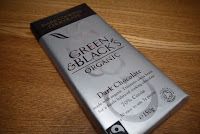Ever since I started making macarons I have wondered who made the best French macarons available. I also realised that I couldn't create my own perfect macarons if I didn't know what the best ones tasted and looked like. I decided to try as many as I could find.
I had already known the two big names in macaron making, Ladurée and Pierre Hermé. I was also on the lookout in supermarkets. This is how I stumbled on Marks and Spencer's and Waitrose's macarons. I also got hold of a box from Paul, one of my favourite bakeries in London.
So I had five different boxes filled with delicate macarons, and I was looking forward to tasting them one by one.
I needed a system, though, so I would compare the macarons through a set of criteria; such as appearance of packaging, selection of flavours in the box, quality of shells (i.e. hard/soft/wonky), how natural they tasted and price.
I started the trial with the M&S ones, and I was very disappointed with them. This was the cheapest box out of the five and I think the price represented the quality. There were twelve very small macarons in a plastic tray and only three different flavours. They were inconsistent in texture, they were hard and dry, they looked mass produced and tasted quite dull.
Next, I tried the Maison Blanc macarons from Waitrose. A paper box that covered a plastic tray held twelve, quite small macarons in six different flavours. Thanks to their appearance and colours, they looked a lot more inviting than the M&S ones. Their shells had good consistency and their fillings in the center were flavourful. Quite good for a supermarket product, and only a little bit more expensive than the M&S ones.
Based in Covent Garden, Ladurée's pretty boutique shop sells beautiful macarons. The price is very high, therefore you expect exceptional quality. I decided to buy an assortment box that contained eight big macarons in eight different flavours and colours. The paper presentation box looked very luxurious, however, it didn't protect the fragile macarons very well. You could easily tell which flavour you were eating with your eyes closed as they were so distinctive. Their shells were shiny and flat with perfect feet, and were just the right texture. I was very impressed with them all, but my favourite was the Liquorice one.
Then, I tried Paul's macarons. The twelve macarons came in a plastic box, with a ribbon round it, in six different flavours. At this point I thought "Can any macarons overtake Ladurée's beauties?" . The answer was no. These macarons were enjoyable and looked more pleasant than M&S's and Maison Blanc's, and the box had a good selection of flavours but the quality didn't meet Laduree's.
My last box of macarons was from Pierre Hermé's shop in London and was the most expensive of all. The shop had a modern, sophisticated feel to it, and the macaron display looked out of this world. I picked one of each flavour and left the shop with an assortment box of twelve macarons. The blue, plastic round box felt very expensive and it held the macarons soundly. The macaron shells were very colourful and some of them were paired with two different coloured shells, nonetheless, they didn't look as uniform as the Ladurée ones. Every macaron had a wow factor with their deep filling and complex layers of flavour, such as Vanilla and bits of Green Olive; Passion Fruit, Rhubarb&Strawberries.
At the end of my macaron journey I felt that if you believe in quality, and would like to taste something
extraordinary, the independent bakeries, patisseries will give you more
pleasure and sensation.
With Love from
Pondtail Bakery







